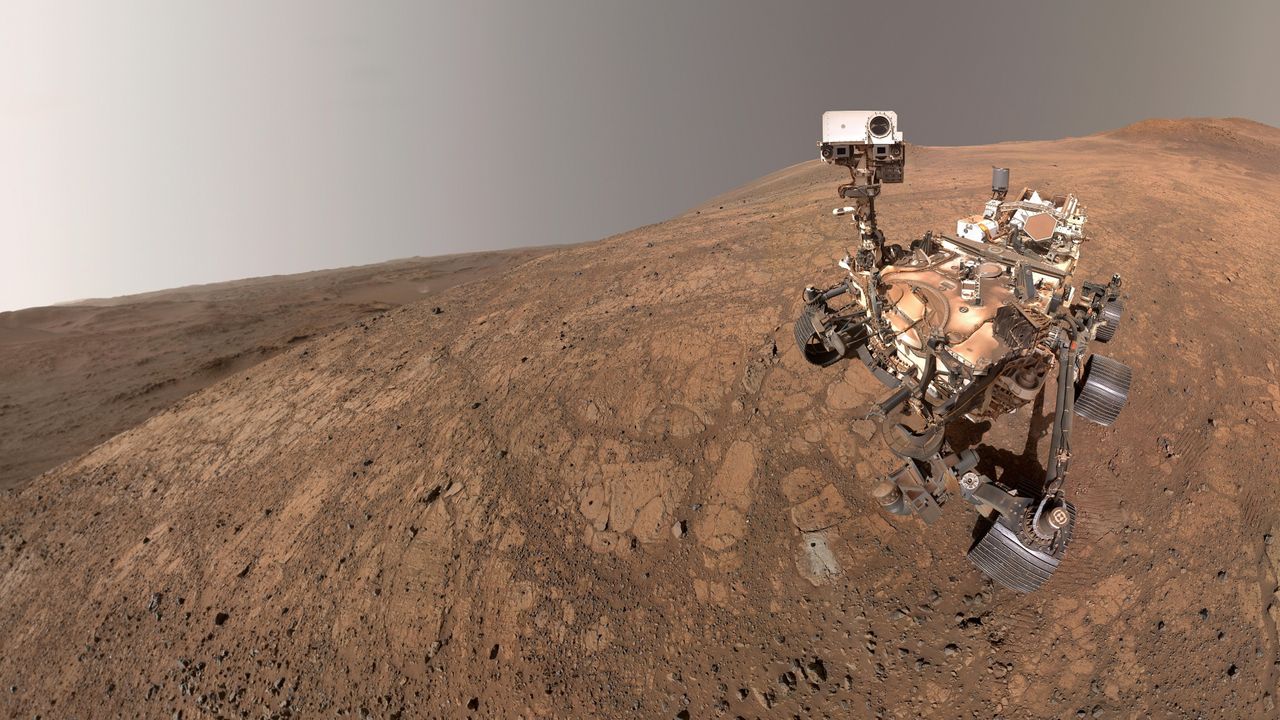
News
October 01, 2025
Mars rovers serve as scientists' eyes and ears from millions of miles away – here are the tools Perseverance used to spot a potential sign of ancient life
Science, especially when conducted remotely on another planet, is rarely black and white.
The red dust of Mars holds secrets that scientists are painstakingly trying to unlock, millions of miles away on Earth. And our robotic emissaries, the Mars rovers, are serving as their invaluable eyes and ears, providing the data needed to piece together the planet's history, particularly the tantalizing possibility of past life. The recent discovery by the Perseverance rover of a potential biosignature is a testament to the sophisticated tools these rovers carry and the dedication of the teams operating them.
Science, especially when conducted remotely on another planet, is rarely black and white. The process of identifying potential signs of ancient life is a complex one, relying on a combination of observation, measurement, and careful analysis. Perseverance is equipped with a suite of cutting-edge instruments designed to do just that.
One of the key tools is the Mastcam-Z, an advanced camera system with zoom capabilities. This allows scientists to scrutinize Martian rocks and terrain from a distance, identifying areas of interest based on their color, texture, and geological features. Once a promising location is identified, Perseverance can move closer to conduct more detailed investigations.
For closer examination, the rover uses its SuperCam instrument. This instrument employs a laser to vaporize tiny portions of rock, allowing scientists to analyze the resulting plasma and determine the rock's chemical composition. This helps them understand the rock's origin and whether it might have formed in an environment conducive to life.
Another crucial tool in Perseverance's arsenal is the SHERLOC (Scanning Habitable Environments with Raman & Luminescence for Organics & Chemicals) instrument. SHERLOC uses ultraviolet light to detect organic molecules, which are the building blocks of life. The presence of these molecules doesn't definitively prove life existed, but it's a strong indicator that the area warrants further investigation.
Finally, Perseverance is equipped with a drill that can collect rock core samples. These samples are carefully sealed in airtight tubes and will eventually be retrieved by a future mission and brought back to Earth for in-depth analysis in laboratories with advanced equipment. This will provide scientists with the best possible opportunity to confirm whether or not life once existed on Mars. The process is deliberate and cautious, reflecting the understanding that definitive proof requires multiple lines of evidence gathered through meticulous investigation.
Science, especially when conducted remotely on another planet, is rarely black and white. The process of identifying potential signs of ancient life is a complex one, relying on a combination of observation, measurement, and careful analysis. Perseverance is equipped with a suite of cutting-edge instruments designed to do just that.
One of the key tools is the Mastcam-Z, an advanced camera system with zoom capabilities. This allows scientists to scrutinize Martian rocks and terrain from a distance, identifying areas of interest based on their color, texture, and geological features. Once a promising location is identified, Perseverance can move closer to conduct more detailed investigations.
For closer examination, the rover uses its SuperCam instrument. This instrument employs a laser to vaporize tiny portions of rock, allowing scientists to analyze the resulting plasma and determine the rock's chemical composition. This helps them understand the rock's origin and whether it might have formed in an environment conducive to life.
Another crucial tool in Perseverance's arsenal is the SHERLOC (Scanning Habitable Environments with Raman & Luminescence for Organics & Chemicals) instrument. SHERLOC uses ultraviolet light to detect organic molecules, which are the building blocks of life. The presence of these molecules doesn't definitively prove life existed, but it's a strong indicator that the area warrants further investigation.
Finally, Perseverance is equipped with a drill that can collect rock core samples. These samples are carefully sealed in airtight tubes and will eventually be retrieved by a future mission and brought back to Earth for in-depth analysis in laboratories with advanced equipment. This will provide scientists with the best possible opportunity to confirm whether or not life once existed on Mars. The process is deliberate and cautious, reflecting the understanding that definitive proof requires multiple lines of evidence gathered through meticulous investigation.
Category:
Technology